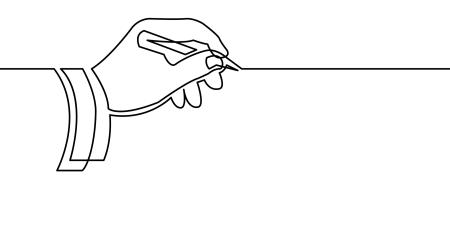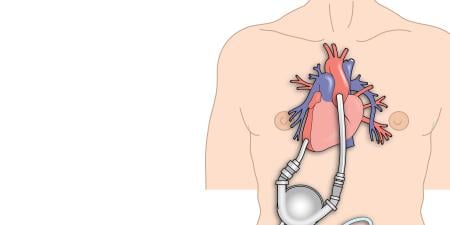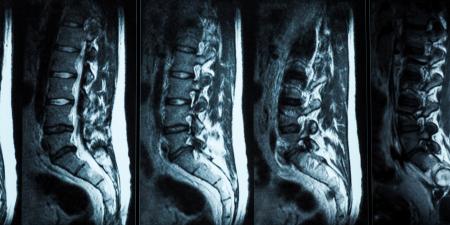Everybody knows that advertising works. Corporations that pay for it know that it is effective and that their investment in product promotion is well spent. Advertising even works effectively on physicians; recent studies have irrefutably demonstrated that advertising has a direct impact on physician prescribing patterns [1-4]. Nevertheless, most physicians, even those who are aware of the data, consider themselves to be immune to the phenomenon, and, because the effects are invisible to each affected individual, they continue to deny that they are or can be moved. Physicians may, therefore, be dismissive of concerns about conflict of interest that are raised by the gifts and the attention of drug and medical appliance manufacturers. The obvious problem with accepting manufacturers' largesse is that physicians' critical assessment of products may be dulled and their judgment skewed away from a profession-directed focus on the benefit of patients. That influence, coupled with the pervasive denial of the phenomenon, creates one arm of this dilemma.
The other arm relates to the need for medical education in the face of current financial arrangements that leave institutions of academic medicine unable to fund important training programs. Current U.S. tax policy allows corporations to accumulate the wherewithal to fund product promotion and enables them to write off product promotion costs as business expenses. The only restrictions on product promotion business activities are minimal fair-trade, truth-in-advertising standards. At the same time, current U.S. policies for funding medical education are woefully inadequate for meeting the need to keep physicians up to date with rapidly advancing pharmaceutical and technological developments. Physicians cannot do the best for their patients when they are not well-informed about relevant scientific advances, the latest developments in drugs, surgical techniques and medical devices or when they do not have the opportunity to develop and refine their skills in using them. Continuing medical education is an essential feature of physicians' professional responsibility. Patients can miss opportunities for better outcomes or can suffer harm because of the lack of physician education.
While a change in our tax structure could, in the future, go far toward resolving the dilemma of either forgoing crucial physician education or funding it through means that can generate conflicts of interest, in the here and now choices have to be made. The American Medical Association Council on Ethical and Judicial Affairs (CEJA) [5] and the American Academy of Orthopaedic Surgeons' (AAOS) Committee on Ethics [6] should be applauded for their efforts to outline a path between the Scylla and Charybdis of compromising options. As philosopher, political theorist and historian of ideas Isaiah Berlin noted,
...the ends of men are many and not all of them in principle compatible with each other, the possibility of conflict—and of tragedy—can never be wholly eliminated from human life, either personal or social. The necessity of choosing between absolute claims is then an inescapable characteristic of the human condition [7].
A caveat that should be gleaned from Berlin's insight is that no plan or guideline for navigating such situations can avoid transgressing ethical borders. Every resolution reflects the competing hazards and advantages. No concession can claim ethical purity; that is not in the nature of compromise. Guidelines can only identify some of the key considerations and provide reasons that publicly explain their importance.
When comparing the competing goals of promoting medical education and avoiding conflict of interest, the likelihood and significance of the opportunities lost by forgoing what industry offers have to be assessed and compared to the likelihood and significance of undue influence on physicians' judgment. In sum, the question that must be considered is whether the package being offered is worth the costs. We consider the following criteria to be critical:
- The accessibility of information without industry interaction is an important consideration in deciding whether to allow any extra opportunity for industry influence on physician judgment and decision making. When information is available through journal articles or other nonindustry-sponsored medical education, no form of gift is acceptable. Education through less-biased means, even though it may require greater effort, is more useful, less likely to be corrupted by industry agendas and less likely to corrupt physician judgment. Sometimes, however, particularly in the use of medical devices, essential training is available only through the manufacturer, and sometimes that limitation is well justified by the need for the equipment or facilities and the manufacturer's expertise in its employment.
- The likelihood of influence has to be considered. Current policies tend to focus on restricting cash incentives to physicians and other services or items that have financial value, and they overlook forms of interaction which may be even more likely to affect physician judgment. Industry public relations experts know the power of personal contact—drug reps are typically young, attractive and personable. Ad experts are also aware of the social and psychological significance of breaking bread together. Some personal contacts can be more seductive than cash, and their effects can be more difficult to discern. Furthermore, a physician's eagerness to be the first one in the neighborhood to have some new piece of equipment or just to do something different is psychologically compelling and may also be part of a (self-interested) physician's marketing considerations. These facts must be taken into account when policies are set.
- The importance of the education for patient well-being and the likelihood that physicians will avail themselves of it without industry support or incentives has to be assessed. Development of a new skill that requires training will also take time. Yet, if the skill is a necessary addition to the physician's armamentarium and if taking the time to learn it properly will minimize risks to patients, a financial incentive to encourage physician participation can be justified. Some education may be so career-enhancing that physicians will pay their own way to develop the expertise. Other training may require considerable personal sacrifice and confer significant patient advantage but little personal reward. Drawing a line in such circumstances turns on an assessment of what it takes to move those who need the education to get it.
- The likelihood and degree of the possible harm of accepting the gift must also be taken into account. Little harm can be done when a physician receives some incentive to use one device instead of a similar device of the same quality. When differences in effectiveness or cost between the alternative treatments are substantial, however, gifts and incentives can lead to significant harm. Furthermore, some incentives (e.g., the lavish, all-expense-paid golf vacation) are so costly and so poorly justified that they can harm not only patients but the stature of the profession.
These considerations suggest at least one guideline that appears on neither the AMA's list nor that of the AAOS. Before accepting any industry-sponsored education or incentive, a physician should make a sincere effort to form an independent evaluation of the product. He or she should review the professional literature, examine a sample and consult colleagues. Only when a product appears to warrant further exploration and the information can only be obtained through a corporate-sponsored venue should a physician open the door to industry.
Clearly, the relationship between physicians and industry is controversial, the relative importance of the factors that have to be taken into account is uncertain, and thoughtful people can draw lines in different places. This conclusion should not be surprising precisely because judgment is critical to the analysis and because dilemmas require us to prioritize competing and important values that reasonable people may rank differently.
References
- Orlowski JP, Wateska L. The effects of pharmaceutical firm enticements on physician prescribing patterns: There's no such thing as a free lunch. Chest. 1992;102(1):270-273.
- Chren MM, Landefeld CS. Physicians' behavior and their interactions with drug companies: A controlled study of physicians who requested additions to a hospital drug formulary. JAMA. 1994;271(9):684-689.
-
Wazana A. Physicians and the pharmaceutical industry: Is a gift ever just a gift? JAMA. 2000;283(3):373-380.
- McCormick BB, Tomlinson G, Brill-Edwards P, Detsky AS. Effects of restricting contact between pharmaceutical company representatives and internal medicine residents on posttraining attitudes and behavior. JAMA. 2001;286(16):1994-1999.
-
Opinion 8.061 Gifts to Physicians from Industry. American Medical Association. Code of Medical Ethics 2008-2009 Edition. Chicago, IL: American Medical Association; 2008:230-243.
-
American Association of Orthopaedic Surgeons. Opinion on Ethics, Gifts and the Orthopaedic Surgeon's Relationship with Industry, February 5, 2002. Opinion on Ethics and Professionalism. Gifts and the Orthopaedic Surgeon's Relationship with Industry, in Guide to the Ethical Practice of Orthopaedic Surgery. 2003:41. Accessed January 3, 2007.
-
Berlin I. Four Essays on Liberty. New York, NY: Oxford University Press; 1969:169.



